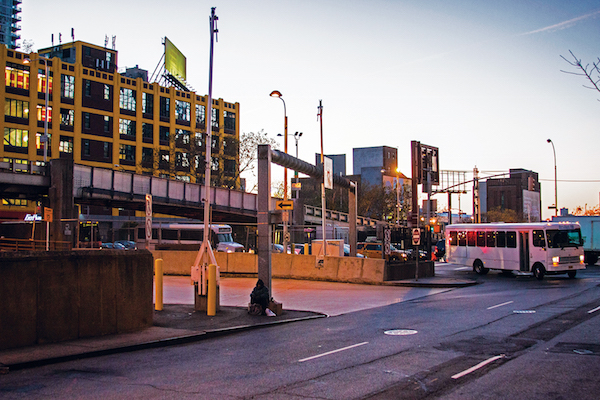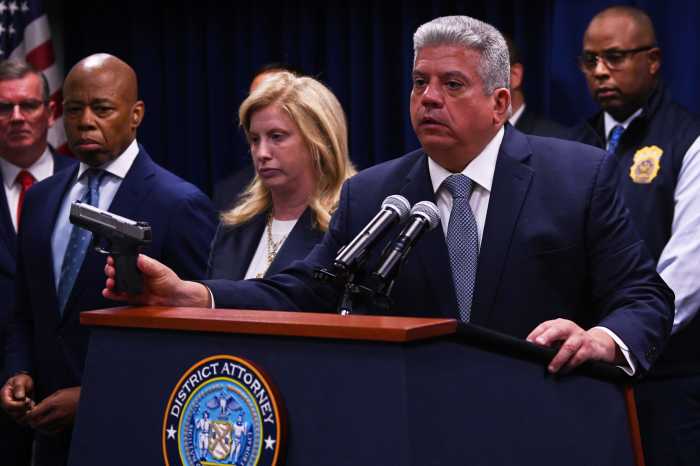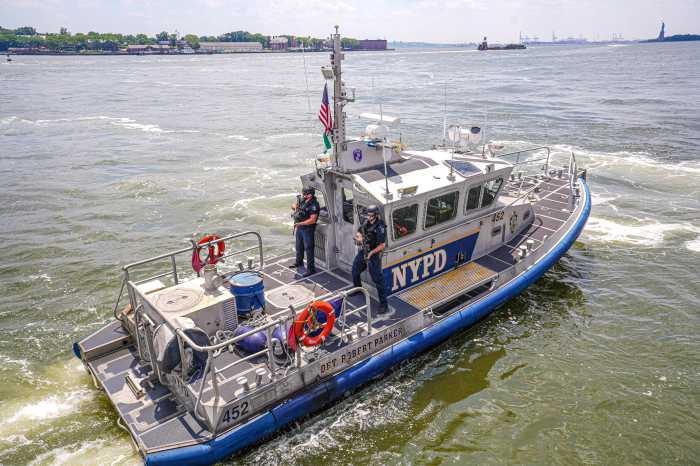
BY ZACH WILLIAMS | Sometime around the year 2030 — at the cost of around $10 billion — a new Port Authority Bus Terminal could bisect Hell’s Kitchen.
The next year will determine how this project would divide or unite the surrounding neighborhood. There is a consensus, in principle, to replace the 65-year-old bus terminal on Eighth Ave. (btw. W. 40th & W. 42nd Sts.). By Sept. 2016, the Port Authority plans to decide the winner of an upcoming design competition — but there are already signs of local opposition to the idea of replacing it with a sprawling complex.
An Oct. 22 resolution, approved by the Port Authority’s Board of Commissioners, began the process of building a new complex on the western side of the current terminal. The resolution included provisions to study the costs of constructing the complex, as well as how it would integrate with mass transit and other traffic across the Hudson River. Three out of five design concepts proposed in March remain in contention, according to the Port Authority. They mostly differ on whether one to four high-rise buildings would emerge on Eighth or Ninth Aves. (concepts one, three and five: https://www.panynj.gov/bus-terminals/pdf/bus-board-3-19-15u-no-annotations.pdf).
Community opposition has already emerged, with particular concern about whether the complex would create high overpasses towering above surrounding blocks. But Port Authority officials left themselves plenty of time for cold feet before committing to where the world’s busiest bus hub will actually go.
Port Authority Executive Director Patrick Foye said at an Oct. 22 press conference that the cost and starting date of the design competition remain to be determined. Ditto for any official price range or location, though the site west of the current facility is preferred.
“It’s important to note no decision’s been made. The design competition may come up with alternative [sites]. There is a great deal work that has to be done by the Port Authority or outside consultants,” he said in a video available on the authority’s website (https://www.panynj.gov/corporate-information/board-committee-meeting-videos.html).
He added that the process moving forward would also include outreach to city officials, commuters and Community Board Four (CB4). But the board beat him to it, with a Nov. 12 letter to Foye stating it had “deep concerns” about the preferred concepts behind the design competition.

While expressing support for a new facility, the board put its criticism in stark terms.
“CB4 is appalled at the idea of condemning two blocks in the heart of Hell’s Kitchen-south, on Ninth Avenue, our main retail corridor, in order to free up investment properties and make space for ramps and pedestrian passageways,” the letter states.
Underground passageways already exist between Dyer and Eighth Aves., the letter adds, while invoking the name of Robert Moses — who demolished city neighborhoods decades ago in order to build new infrastructure. Aboveground facilities between Ninth and Eleventh Aves. (btw. W. 39th & W. 40th Sts.) could spark a fight with the local community, according to the letter.
“This would require the eviction of many affordable housing tenants, a church and food pantry, a nursery school, a farm, the only affordable food supermarket and a number of other retail stores essential to the character of our neighborhood,” states the letter. “Robert Moses’s technique of razing our neighborhood is no longer acceptable. You can and must do better than that.”
An idea also emerged at a Nov. 12 meeting of the CB4 Clinton/Hell’s Kitchen Land Use Committee to research potential landmarks in that area as a means to limit the intrusion of a future bus terminal into the surrounding neighborhood. “Creativity sometimes is born out of restraint” was the mantra of the discussion committee members had that night about how to balance the need for a new terminal with a desire to have it weave itself into the fabric of the local community.

Several committee members said in interviews that early intervention in the design process could keep an unacceptable design from moving forward. They see an opening in the fact that Port Authority officials now only have a plan to make a plan.
“If you define what will not work for the community and New Yorkers at-large, you will get people who will come up with ideas that can be not only functional, but also aesthetically and historically relevant to what our neighborhood is,” said committee member Delores Rubin.
The existing bus terminal will remain open through the construction of a new facility, which will take about 15 years, according to Port Authority estimates. It remains an open question whether a new terminal will accommodate both commuter and long-distance buses, depending on whether the authority decides in the future to host the latter at another site either in Manhattan or in New Jersey.
In the meantime, CB4 is urging the Port Authority to allocate money to install GPS tracking on buses to better manage them as they enter and exit the terminal, dedicate more lanes for buses in the Lincoln Tunnel, and identify a site for long-distance buses across the Hudson.
As authorities fielded questions at the Oct. 22 press conference about location, size, cost and scope, a critical concept arose: the degree to which this project, likely to affect blocks west of the current facility, is “scalable” — what John Degnan, chair of the Board of Commissioners, said is “otherwise known as a ‘compromise.’ ”

































